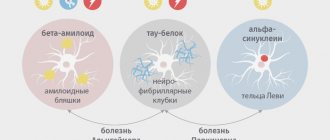O.I. Sukhoveeva
teacher at the Volga Institute
advanced training of the Federal Tax Service of Russia,
Candidate of Psychological Sciences
Today, professional stress is a very serious social phenomenon that is progressing at a tremendous pace. A person’s reaction to a stressful situation is manifested not only in psychological and emotional stress, health and performance suffer, and the quality of life in general changes. The employee is in a state of constant fatigue and loss of energy, and health problems appear. “I don’t have a job, but a lot of stress”, “I’m under constant stress”, “Such nervous stress is simply unbearable” - we can often hear such phrases from the lips of a working person. Indeed, the modern professional environment includes quite a lot of stress factors, the so-called stressors.
Stress is defined as a state of increased tension that occurs in response to a variety of extreme environmental influences.
Professional stress is considered as a tense state of an employee that arises when exposed to emotionally negative and extreme factors associated with the professional activity performed.
You need to understand very clearly that stress is not always bad: it can be beneficial for a person, a stimulator of his activity, and harmful, reducing a person’s resources and activity. According to G. Selye’s definition, such stress is called distress.
Occupational stress most often refers specifically to distress. If an employer is interested in creating safe conditions, high labor productivity, and motivating employees to achieve success in their work activities, then they cannot ignore the topic of preventing occupational stress. Work is truly one of the biggest sources of stress these days.
Psychologists say that the degree of professional stress is evidenced by a special phenomenon called “professional burnout.” The work of most people is rarely calm, measured and devoid of worries and worries. The ability of a specialist to maintain a high level of performance under conditions of psychological stress is a decisive factor for success.
When creating conditions for achieving optimal productivity and activity in professional activities, it is necessary to use systematic and comprehensive knowledge of various areas in science. One of the most important and necessary studies for both managers and ordinary employees of scientific fields is the psychology of work.
Labor psychology studies the patterns of labor activity, development and formation of a person in the process and as a result of work. One of the tasks of occupational psychology is to provide conditions for safe and effective work and to ensure the performance of employees.
In order to cope with stress, you need to understand its nature very well.
N.V. Samukina identifies the main types of professional stress (distress):
Information stress is stress associated with a high degree of decision-making responsibility in conditions of uncertainty and lack of necessary information, as well as with frequent and unexpected changes in information parameters
Emotional is stress that arises from real or perceived danger; experiences of humiliation, anger, resentment; contradictions in relationships with colleagues or management
Communication is stress associated with real problems of business communication and manifests itself in increased irritability; inability to defend against communicative aggression; failure to formulate the necessary refusal. The main manifestations of communicative professional stress are most often: irritability in business communication, the habit of communicating in a raised voice; dissatisfaction with one's job, communicative aggression: the desire to humiliate or suppress an opponent in competition, verbal aggression; open challenge to conflict, pickiness, hints, refusal to help, lies, pettiness, threats; spontaneous outbursts of rage; directed at another (blaming another) or at oneself (self-blaming).
Analysis of the causes of stress and methods of its prevention 7941
The universal concept of stress was formulated by the world famous Canadian physiologist Hans Selye, which had a great influence on various areas of human science: psychology, medicine, sociology and other fields of knowledge. The problem of studying the mechanisms of emotional stress, which is the price to pay for progress and civilization; the development of methods for overcoming stressful situations is especially relevant today. Like many thousands of years ago, our body responds to difficult life situations with an instant response from the nervous system involving the mental sphere. Modern life situations lead to a sharp increase in psychological stress on a person associated with his process of perception, especially with insufficient information, with the complexity of decision-making, with the responsibility and danger of human activity [10]. In addition, the pathogenic influence of environmental factors on human health is sharply increasing [12].
Currently, there are mostly unfavorable changes in the mental health picture of the population. There is a significant increase in the number of neuropsychiatric diseases, primarily those that are the most characteristic reaction to mental stress. These are primarily neuroses, post-traumatic stress disorder, psychosomatic disorders, characterological and pathocharacterological reactions, as well as reactive psychoses, deprivation personality development. Thus, in the 15 most economically developed countries, the prevalence rate of mental illness over a period of 98 years (1900–1998) increased 10 times and currently stands at 303.7 per 1000 population; The increase in neuroses (61.7 times), alcoholism (58.2 times), and mental retardation (30 times) is especially significant. In Russia for 1950–1998. the incidence rate of mental disorders rose from 137.4 to 301.3 per 1000 inhabitants [7]. There is a sharp increase (catastrophically in recent years) in the number of suicides (and the majority of suicides are with mental disorders), alcoholic psychoses, addiction diseases in general (and not only chronic alcoholism, but also drug addictions, substance abuse), borderline (non-psychotic) forms of psychopathology, the origins of which psychological and other stress is also often a factor; these painful addictions can mask other mental suffering.
In turn, the depletion of the body’s protective functions under stress and negative factors of various natures lead to more frequent exacerbations and unfavorable course of mental illnesses, the main cause of which is, for example, hereditary predisposition (schizophrenia, manic-depressive psychosis, epilepsy, etc.)
The disease is formed under an unfavorable combination of circumstances for the individual - external and internal. The entire biography of a person, developed throughout life, starting from birth, response stereotypes, resources, endurance, and vulnerability of the individual to stress can be important here.
Now specialists dealing with the problem of stress use relatively new or completely new designations for mental disorders that arise in unfavorable social conditions: noogenic, information neuroses, generalized anxiety disorder, post-traumatic stress disorder, illness of victims of war stress and other disasters, orphan syndrome etc. But almost everything that we now see in the clinic of mental disorders is not fundamentally new: the same basic forms of response as in the distant past [12].
The neuropsychic health of children is currently a serious concern. As is known, the state of mental health of children ensures their social adaptation and affects physical, somatic and reproductive health. This primarily concerns children from socially disadvantaged groups. The frequency of mental illnesses in childhood in Russia has reached 15%, and in adolescence 20–25%, which is ten times higher than the figure obtained based on official statistics (on visits to a psychiatrist). The prevalence of the main forms of mental illness among children and adolescents increases by 10–15% every ten years [5; 6]. Neuropsychiatric diseases are the cause of 70% of childhood disability.
Currently, stress prevention takes place in two main areas:
- pharmacotherapy aimed at correcting the physiological nature of the stress reaction;
- development of a complex of important sociotherapeutic factors addressed to the individual [4].
When starting to consider the psychopharmacological aspect of the problem, it is important to keep in mind the point of view of Academician A.V. Waldman (1979, 1984), who argued that psychopharmacological effects should not be aimed at suppressing emotions during stress, but at mechanisms that contribute to the development of negative manifestations of emotional stress disorders. Of particular importance are studies of pharmacological effects on neurotransmitter systems, which are actively involved in the body’s response to psycho-emotional stress.
This determines the strategy for searching for optimal means of correcting neuropsychiatric pathologies caused by stress. These drugs include, first of all, a number of psychotropic drugs used in the treatment of various forms of psychoses, psychotic conditions, neurotic and neurosis-like disorders, accompanied by a state of tension, fear, anxiety and other symptoms caused by stress. The creation of modern psychotropic drugs began in 1952 in France, when the specific antipsychotic activity of chlorpromazine was discovered and used in a psychiatric clinic. Neuroleptics, which were the first to be introduced into psychiatric practice, occupy a central place among psychotropic drugs to this day. The depressive, calming effect of neuroleptics is expressed in reducing the response to external influences, weakening psychomotor agitation, suppressing fear, etc. Fundamental research in the field of psychopharmacology, carried out in recent decades, has made it possible not only to solve the problem of creating new drugs to combat stressors, but and contributed to the development of new concepts of the pathogenesis of psychopathological conditions [11].
An example is the “catecholamine” theory of affective disorders. Psychopharmacological studies have shown that the ability to regulate the primary manifestations of emotional stress reactions, anxiety, and fear is associated with certain groups of neuroreceptors (serotonin, GABA-benzodiazepine, dopamine) [ibid.].
In the dynamics of the development of psychopathologies caused by stress, researchers identify three specific stages, which have their own characteristic behavioral manifestations, characterized by different sensitivity to psychotropic compounds: groups of nootropics, tranquilizers and antidepressants. This opens up the possibility of targeted, effective therapeutic intervention taking into account the specifics of the disease.
A special place among the means of psychopharmacological correction is given to phytostimulants, for example, ginseng-like plants, which contribute to a nonspecifically increased resistance of the body to various adverse effects. Phytostimulants, or adaptogens, accelerate adaptation to physical and mental overload, cold and heat, lack of oxygen, mental stressors and other extreme factors of life. The mechanism of action of adaptogens is associated with an increase in the formation of energy reserves (ATP, etc.) in the body, especially in the central nervous system. It has been shown that adaptogens stabilize biological membranes, protect them from disintegration during overloads, and stimulate the hypothalamic-pituitary-adrenal system, which is responsible for the body’s stress response (Burlakova et al., 1985).
Along with psychopharmacological correction of neuropsychiatric diseases, psychological strategies for protecting against stress have become widespread over the past 20 years. The problem of stress prevention has grown from a medical one into a social one.
Society needs to be mobilized to reduce stressors and implement effective control measures. This task includes:
- creation of specialized research and educational centers for stress prevention;
- support for general mental health services;
- elimination of the most unfavorable production conditions for the development of emotional stress;
- increasing people's ability to cope with stressful situations. A special role belongs to elders in supporting younger family members during times of crisis or difficulty;
- development of special programs aimed at different social groups of the population on the culture of behavior in the family and at home in order to prevent psycho-emotional stress;
- paying special attention to vulnerable groups such as youth, the unemployed, the desperately needy, the elderly, the disabled and the mentally ill, supporting socially vulnerable members of the population through health centers, schools, business circles, public and religious organizations, etc.
Mental adaptation plays a decisive role in the process of maintaining adequate relationships in the “person-environment” system. When a stressful situation occurs, active actions are necessary to eliminate the source of stress in order to minimize mental and physical losses to the body: reducing the force of the stressor, eliminating the recurrence of the stressful situation.
Psychologists and doctors have developed a number of ways and methods for preventing stress, both individual and organizational.
Individual methods include:
- regular active rest;
- relaxation (yoga classes, meditation, auto-training);
- training in self-control of behavior skills;
- planning your own time;
- cognitive therapy;
- ensuring sufficient sleep duration, etc.
Thus, rational-emotive therapy is aimed at replacing negative thoughts in a stressful state with positive ones. There are a number of psychological techniques for coping with stress: psychoanalysis of a stressful situation, training in self-control, methods of “saving” emotions (Vasiliev, 1991; Leonova, Kuznetsova, 1993). A whole set of socio-psychological mechanisms for reducing tension is associated with the use of techniques for “escape” from tension by “reducing” the significance of the situation [2]. It should be noted that it is impossible to eliminate stress and negative mental states by protecting yourself from everything that potentially carries the danger of negative experiences. Certain negative states (irritation, anger, etc.) are a stimulus for search activity, to achieve certain goals and contribute to personal development. Search activity is a kind of protective means aimed at changing an unfavorable situation or maintaining a favorable situation despite the action of stress factors [9].
Thus, from understanding the nature of stress, it follows that the desire to avoid stress in general is the wrong strategy of behavior. It is important that in the phase of resistance to a source of stress, the human body is much more resistant to adverse external influences than in a state of complete rest and relaxation. “Tempering” the body is useful both physically and emotionally, since emotions act as triggers for stress reactions.
Practical conclusions of domestic and foreign psychologists [1; 3] for individual prevention of stress are as follows.
The main barrier should be placed on the path of transformation of stress into distress.
Recognizing the inevitability and functional usefulness of stress does not mean that they need to be created artificially.
A person must cope with stressful situations based on an understanding of the nature of stress as a surge of hormonal activity that can be neutralized.
Stress, like illness, can be easier to prevent than to subsequently treat its consequences.
The most important way to prevent emotional stress should be considered reducing the novelty of incoming situational information, i.e. expanding the accumulated information base, which is based on modeling adequate behavior in stressful situations. Expansion of the arsenal of behavioral stereotypes is also achieved through life experience. If, in the case of a subconscious conflict, the success of psychotherapy largely depends on the awareness of this conflict (psychoanalysis), then awareness of the causes, for example depression, will not eliminate the emotionally tense state. What is needed here is a restructuring of a person’s attitude to a traumatic situation, a reorientation of the individual to a system of new values to replace the lost ones, the formation of new interests that do not contradict the person’s basic life attitude and correspond to his capabilities. Understanding values provides emotional boundaries and helps avoid anxiety, fear, uncertainty and doubt.
Work and physical activity play a huge role in eliminating the negative consequences of stress. Various types of physical activity are a way to eliminate the physiological mechanisms of stress. Muscular work eliminates excess hormones that maintain a state of emotional overstrain. As a result, heart function is normalized, blood pressure is equalized, nervous system excitation is reduced, and the emotional state is normalized.
A set of physical exercises aimed at preventing stress is divided by experts into three groups:
- exercises that help increase the excitability of the nervous system consist of dynamic loads (jumping, running, walking, intense bending, squats, etc.), isometric exercises with tension of individual muscle groups (yoga poses), tonic breathing exercises with holding the breath while inhaling and etc.;
- exercises that reduce the excitability of the central nervous system during nervous and emotional stress and return it to optimal tone: voluntary muscle relaxation, calming breathing exercises, etc.;
- exercises that normalize cerebral and peripheral blood circulation: gymnastics for the head and neck, deep breathing exercises, alternating tension and relaxation of muscle groups, etc.
It should be noted that the problem of stress prevention should be approached comprehensively and, along with individual techniques, measures to prevent stress at the organizational level are necessary. Such measures include:
- development of effective standards for the acceptable degree of emotional stress in social and industrial conditions;
- regular monitoring and formation of an acceptable socio-psychological climate at work;
- correct organization of the production structure (distribution of powers and responsibilities, taking into account the abilities and capabilities of a particular employee);
- eliminating possible conflict situations (maximum informing the employee about corporate relations in the team;
- the right to plan working time, regular feedback from management, advisory support, etc.);
- compliance with sanitary and hygienic standards (optimal organization of workplaces, the possibility of short-term rest, meals at work, etc.).
Among the recommendations for reducing stress levels formulated by modern managerial and psychological thought, there are also quite unexpected ones that run counter to generally accepted ideas. For example, there is a widespread belief that a fairly reliable protection against stress at work is a strong family, a “strong rear” in which an employee attacked by work stress finds consolation and support. However, American researchers Susan W. Kobasa and Mark K. Pusetti, who examined about two hundred workers at middle management level and above in one of the large companies, recorded a strange phenomenon. It turned out that workers who perceived their families as their greatest support had the highest rates of stress-related illnesses. This fact was confirmed even in relation to those who had such a social asset as a large salary or a high position. The essence of this situation was interpreted to mean that the families of workers do not provide them with the support that is required to overcome stress at work. While the work situation requires them, say, to discipline or mobilize all their strength, the family may support qualities that are not the most appropriate at such a moment - resentment towards colleagues and management, self-pity, shifting the blame to others or circumstances, etc. Therefore, not all family support can serve as a reliable refuge from stress [13]. The recommendations listed above for preventing stress in industrial and social groups are quite general. A specific stressful situation is always unique, since it is determined not least by the individuality of the person exposed to stress (his temperament, character, style of behavior, etc.). In addition, a person’s susceptibility to stress at work largely depends on the general background of life, i.e., on how successfully he knows how to get out of stressful situations generated by general social, family, age and other factors. A person who is seasoned in overcoming various life barriers and troubles should obviously cope more successfully than others with professional stressful situations.
Thus, one of the keys to success in overcoming stress at work lies in the general life strategy of the individual, based on selected basic values and taking into account the characteristics of his personality.
It should be emphasized that, along with the above, a special place in the prevention of stress is given to the formation of a person’s personality in early and teenage years. The upbringing of a child must be aimed at increasing his adaptive capabilities, developing and training his volitional qualities, and forming a correct assessment of his personality. At the same time, it is necessary to pay close attention to establishing a psychological climate in the family and team, based on respect for the person, his needs and goals. The active participation of teachers, psychologists, sociologists - specialists working with children and adolescents is necessary, since these specialists occupy here, according to O.V. Kerbikova (1955), such positions from where “the flow of birth can be seen” [5, p. 204].
To summarize this article, we can note the following.
Stress is an adaptive reaction of the body to a significant stimulus and is a complex psychophysiological process, including complex relationships between the mental and somatic.
A high level of stress (destructive stress) becomes harmful to the body, contributes to the development of psychophysiological disorders and neuropsychiatric diseases, and can lead to general exhaustion of the body and, ultimately, to death.
Emotional stress is a complex problem generated by the entire set of political, social, economic, spiritual factors in society, therefore it is necessary to develop and adopt government programs of comprehensive social and medical measures to reduce the level of stress in society.
To prevent the medical and social consequences of emotional stress, medical, industrial and educational measures are needed, such as:
- strengthening fundamental research into the mechanisms of resistance to emotional stress, developing methods for objective control and dosing of emotional stress,
- creation of a network of services to assist the population in the prevention and rehabilitation of the consequences of stress, including psychotherapy, adequate nutrition, physical exercise, water-air procedures, taking vitamins, microelements, minerals, physiotherapeutic procedures, massage, music, yoga exercises, meditation, autogenic training , progressive muscle relaxation,
- development of special programs aimed at different social groups of the population on the culture of behavior in the family and at home in order to prevent psycho-emotional stress,
- development of effective standards for the acceptable degree of emotional stress in social and production conditions (providing workers with the opportunity to participate in production decisions, humanizing shift work and night work, etc.),
- technological policy aimed at reorganizing production, taking into account the psychological and physiological relationships of workers, eliminating the most unfavorable production conditions for the development of emotional stress,
- development of effective measures to increase resistance to psycho-emotional stress of persons predisposed to this in the workplace.
Psychologists most often identify the following factors of professional stress:
- The employee’s working day is associated with high temporary overload, irregular working hours;
- working conditions do not meet safety and physical comfort requirements;
- an employee works in a situation of time shortage, there are many different tasks, but there is not enough time to implement them, one thing overlaps with another, all matters are urgent;
- the employee is forced to make decisions independently.
- the employee is not sufficiently informed about his professional responsibilities and the powers of his colleagues and superiors;
- high responsibility for other people and for material values;
- low degree of influence on decision making in the organization;
- difficult relationships with management, with subordinates, with colleagues;
- intrigue, manipulation pressure from colleagues, managers, subordinates
Methods for preventing professional stress:
- On the part of the organization: creating effective working and rest conditions (safe workplace, optimal work and rest schedule, creating conditions for quality rest, maintaining and restoring health, holding corporate events aimed at relieving stress and uniting the team, creating conditions for informational and psychological employee safety, a clear distribution of responsibilities between employees, respect for rights and social guarantees, a well-developed system of motivation and incentives, rewards and punishments, etc.)
- From the management side: creating a favorable socio-psychological climate, choosing the optimal leadership style (the most effective is the situational management style, one of the ineffective and most stressful is the tough and authoritarian, conniving, emergency, restructured (constant and unsystematic innovations), it is necessary to use appropriate delegation powers.
- On the employee’s part: managing one’s attitude to what is happening, developing attitudes that reduce stress, helping to respond more softly to stressful situations, developing positive life attitudes (for example: “You can’t change circumstances, change your attitude towards them”, “We must consider problems according to as they arise"; readiness to make the necessary adjustments to one’s own actions, the use of humor as an effective means of overcoming crisis situations, enjoying communication with people (relatives, colleagues, friends, neighbors, acquaintances and strangers); providing attention, help and support in relation to other people with whom you have to carry out a common task; the use of relaxation, meditation, autogenic training, giving up bad habits; developing the ability to switch to other activities (hobbies, communication with animals; a healthy lifestyle; playing sports; water procedures); compliance with the work and rest regime.
N.V. offers effective self-regulation techniques under conditions of communicative stress that can be used by almost every employee. Samoukina.
Combating fatigue in the workplace
Reducing the impact of fatigue involves changing habits. And coping with fatigue constantly requires numerous changes in habits and lifestyle. But the results are worth it. Below are guidelines to consider when trying to eliminate fatigue problems.
Implement wellness programs
Wellness programs can be a significant investment, but the results can be seen in improved employee engagement, fewer absences due to injury and illness, and improved employee health, leading to improved health and safety outcomes and increased productivity. Such programs and policies often include:
- health education,
- medical examinations for sleep disorders,
- prevention programs including smoking cessation, weight control, exercise and healthy eating promotion,
- fitness programs/services on site or discounted group rates at external facilities,
- long rest breaks,
- provision of healthy food in vending machines and cafes.
Creating a favorable microclimate and conditions in the workplace
Human circadian rhythms can be easily disrupted by insufficient natural light, which can worsen feelings of fatigue. Additionally, a small change in temperature can also have a significant impact on energy levels and performance.
Bright light promotes wakefulness and increases productivity, but can cause problems with people's internal clocks. The body needs natural light to achieve optimal levels of functioning. Natural light makes people less sleepy and helps them work longer. This means that providing natural light whenever possible can help prevent fatigue.
Temperature can also affect fatigue levels. Cooler temperatures require energy to be diverted from the brain to warm the rest of the body. When this happens, the brain is likely to function less well and people are much more prone to making mistakes. Ensuring a comfortable temperature in the workplace can prevent this.
Each person's work environment should be taken into account. Do they have to go up and down, cover distances, lift objects repeatedly? Anything that can be automated to reduce unnecessary movement or help with moving loads can not only reduce fatigue, but also improve productivity.
Changes in physical factors due to seasonality, production demands, or temporary failure of heating or air conditioning systems must be taken into account as they may deviate from the normal levels to which workers are accustomed.
Informing about the benefits of sleep
While employees' off-site lives may seem secondary to maintaining a safe working environment and managing fatigue, their health and safety is just as important outside of work hours.
Companies should consider training their workers on the importance of sleep. Providing free materials and education on sleep hygiene and sleep health can result in more rested staff. It can also encourage them to take a nap at home without feeling like they're wasting time.
This is important because many studies have shown that taking short breaks from work (10-30 minutes) increases productivity by 34 percent and alertness by 54 percent. A short nap of 10 minutes can improve alertness, communication and mood.
Some companies even provide "break rooms" and actively encourage employees to use them because they know that sleep can improve productivity, critical thinking, and creativity.
Unfortunately, few organizations can offer their employees the opportunity to take a short nap during their shift. In most cases this is simply not practical. As a next best option, helping them sleep better at home can significantly change their fatigue levels and result in improved health, safety and performance.
While employers cannot guarantee that employees are getting enough good quality sleep, it is worth making them aware of the significant risks of fatigue on and off the job. Training sessions, guides, and webinars on the topic are a good way to help employees understand the value of getting enough sleep. You can find related tutorials or create your own. Whatever resource you choose, make sure it contains the following guidelines:
- Develop a bedtime ritual. This will help your body understand that doing certain things means it's almost time to go to sleep.
- Your bedroom should be cool and dark.
- Technology should be removed from the bedroom. Screens are distracting, and their light also interferes with circadian rhythms. Regular late night computer use is associated with sleep disturbances, stress and depressive symptoms.
- The brain should equate your bedroom with sleep. Exposing your brain to mixed messages, such as watching TV or working in bed, means it won't associate pillows and sheets with sleep.
- Avoid stimulants such as caffeine, tobacco and alcohol before bed as they interfere with your body's natural rhythms.
Use of technological and engineering solutions
The number of wearable devices designed to track fatigue is expanding. These days, numerous companies provide specialized equipment to various industries, such as:
- drowsiness glasses,
- caps that measure brain activity,
- monitors that track head and facial movements,
- wearable devices,
- applications on smartphones.
Tools and devices designed to monitor fatigue can be extremely useful in preventing serious incidents in which fatigue is a factor, especially when the information collected by some of these devices can be automatically sent to management or supervisors. This data can be critical in industries where a manager can make informed decisions about giving severely fatigued workers safer work assignments, schedule changes, or other interventions in real time.
In high-risk industries, health and safety professionals can use fatigue tracking technologies to see at a glance how fatigued each worker is, identify critical risks, and then take steps to correct the situation. But it's important to remember that this is no substitute for good old-fashioned communication, feedback and a culture that encourages open dialogue about fatigue.
Fatigue monitoring devices cannot stop fatigue, tell workers what to do if they are tired, or rest. They can only provide information. So organizations and their employees must make the right decisions.
When it comes to technical solutions, organizations should consider things like anti-fatigue coatings, conveyor belts, tools that are suspended from above to prevent bending and lifting, etc. Even small changes in the environment can help reduce stress and fatigue.
Stress management
Workplace stress can have a significant impact on fatigue. In fact, constant and prolonged stress is debilitating and detrimental to mental and physical health.
Some managers believe that pressure can make employees work faster, and it will—but up to a point. But soon enough, fatigue will catch up, and the effects of stress will result in health care costs, accident compensation, and lost productivity. An employee who works in a friendly, relaxed environment performs much better than one who is constantly under pressure. And a relaxed work climate is possible even in very dangerous and stressful jobs, because we are talking about the psychological climate, and not about the work itself.
Some employers try to help their employees manage stress and other aspects of their lives by offering flexible hours, long vacations, half-day Fridays, stress-reduction classes, and even yoga. In general, creating social activities for employees is good for improving morale and reducing stress. Even simply providing “space to relax” can make a big difference.
In addition, communication with employees can improve well-being because keeping employees informed about the company and their own performance reduces feelings of stress and anxiety.
Leadership and team communication also play a key role here. Leaders must be able to recognize signs of stress in their teams and understand how many sources of stress transfer from work to home and vice versa.
Take breaks
Every eighty to one hundred minutes, people’s concentration and attention levels drop, fatigue sets in, and their performance suffers. This is a signal that it is time to stop and take a break. These breaks can be as simple as going to the bathroom, taking a walk to talk to a co-worker instead of sending a text, or just taking a few minutes to walk, stretch, and look out the window.
People's brains and bodies are unable to function continuously at a stable level for eight or nine hours at a time—everyone experiences lapses in concentration throughout the day. Recovery breaks are a proven method for allowing your brain to rest and work longer.
Several short breaks can improve productivity and are better for employees than working a full shift with one break in the middle.
The intensity and conditions of work must also correspond to the frequency and duration of breaks. Someone who lifts heavy objects in hot conditions takes significantly longer to recover than someone who sits in an air-conditioned room. Ideally, managers need to have strategies for scheduling work and distributing it evenly among their team.
Companies should encourage workers to take short breaks to:
- A short walk
- Visual gymnastics,
- Warm-ups,
- A little conversation.
This can lead to employees feeling less fatigued and more likely to notice a safety hazard and make safer decisions.
You should eat right
While it may seem like nutrition has nothing to do with fatigue, it actually has a huge impact on your energy levels. That's why it's worth providing employees with the information they need to encourage certain behaviors and changes in eating habits.
Even mild dehydration can have a negative impact on performance and fatigue. This increases the feeling of sluggishness and slows people down. To address this issue, keep in mind that when it comes to hydration, not all liquids are created equal.
Carbonated and sugary drinks will give a person a short-term boost of energy, but this will soon be followed by a crash and increased fatigue. It is best to drink water. A water cooler in the workplace is always a good idea as it provides workers with easy access.
Some people use coffee for hydration and stimulation. But caffeine is a stimulant that works best when used strategically because its effects can last up to six hours and can interfere with the body's natural rhythms. Additionally, like alcohol or salty foods, caffeine can contribute to dehydration.
It is even more important to encourage workers to stay hydrated in hot work environments, as people require more fluids than usual in these conditions. It is a good idea to distribute water to employees on a regular basis and provide regular reminders to drink water.
Exercises and warm-up
Research has shown that exercise helps relieve stress, improve overall health and strengthen the immune system. Physical activity has also been shown to increase energy levels and reduce fatigue. And the exercises don't even have to be strenuous. Research shows that people who exercise at low intensity three times a week experience a 65 percent reduction in fatigue levels. A simple walk several times a week is very helpful in reducing fatigue levels.
Even people who are sedentary and prefer to engage in regular, low-intensity exercise can increase their energy levels by 20 percent. So, although it may not seem very attractive, you can start with simple exercises and results will soon follow. Encouraging breaks from exercise can help create a healthier and less fatigued workforce.
Rules of conduct under stress:
- observe yourself (meaning, it is necessary to monitor and realize changes in your reactions and behavior in a situation of stress);
- look for ways to “stop” yourself (such as “take a break”, “take a break in communication”);
- transfer your energy to another form of activity (get distracted and switch to another activity);
- think about what helps relieve stress (What makes you more happy? What do you do with passion?...).
All of the above recommendations can help an employee learn to control the level of stress received during professional communication, regulate their behavior, stop “getting hung up” on the negative emotions received, and not take to heart situations that are most often associated not with a personal threat, but with the general psychological tension of the team when solving a general problem.
Thus, the employer’s task is to create optimal conditions for the employee, but an important resource is also the independent and conscious preventive work of the employees themselves, which must be stimulated through various organizational measures.











